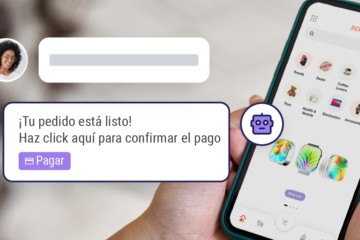With the variety of digital channels through which a customer can communicate with a company, will the IVR still work in 2020?
Of course it is! The telephone continues to be the most used channel for contact between customers and brands, and therefore the role of IVRs (Interactive Voice Response) remains central to providing an optimal experience to those who contact by phone.
The most important thing to keep in mind is, precisely, to maintain an optimal experience for an increasingly demanding customer who demands immediate solutions. In fact, according to studies, almost 80% of consumers nowadays prefer to resolve their queries on their own rather than interact with an agent. So the goal of the IVR, whether inbound or outbound, must be more than ever to facilitate self-service management. And not, as still happens in some companies, to overwhelm it with an infinite number of options that are impossible to follow and that make the customer end up abandoning the call.

Today, advances in voice technologies, integration with systems and artificial intelligence make it possible to increase the IVR’s possibilities to empower customers with more self-service options. And at the same time optimize the work of agents by automating part of the service.
Five trends to consider for building an effective IVR
1) Add value to your IVR
An IVR can function simply as a pre-service system, which transfers calls to the appropriate internal number. But it can also go several steps further and resolve customer inquiries or orders without transferring the call.
Today’s technologies make it possible to capture data and integrate it with the company’s systems from the IVR. In this way, when the user calls back, it is not necessary to repeat his data, since the system connects them with his telephone number.
It is even possible to configure dynamic IVRs, which instead of providing a pre-set menu of options, modify their behavior in real time, without interrupting the service provided to the customer.
IVR workflow designs will depend on the customer service needs of each company and contact center. The important thing is to create customized applications that really streamline the customer service and business processes, and solve the case at the first contact, ensuring customer satisfaction. Whether they want to communicate with a specific department or they want to place an order as quickly as possible.
2) Employs vocal technologies to provide conversational attention.
One of the most innovative ways to provide value to customers interacting with the IVR is to incorporate voice technologies such as Text To Speech (TTS), Automatic Speech Recognition (ASR) or voice biometric identification. These technologies make the IVR far from the inflexible traditional menus (where if we press a wrong digit we have to start over, for example) and make the interaction more natural. In addition, they mean that the customer does not have to choose a predetermined option that may not fit what he needs, and can specifically express his query.
The most advanced technology in this regard are cognitive voice portals: these are telephone bots that interpret the natural language with which users communicate and provide a more humanized and closer attention than the conventional IVR. But even if an artificial intelligence bot is not applied, the trend is to give a conversational tone to the interaction, and this should be the focus when building the IVR.
3) Integrate the IVR with other systems
For the IVR to have a high degree of case resolution and function as a self-service terminal (something highly appreciated by younger customers), it is essential to tightly integrate the IVR with the company’s data and applications, from the CRM to the collections system. In this way, customers have access to a wide range of self-managed options, from consulting their invoices or account statements, requesting credit authorization, moving forward with a transaction or even making a transfer between accounts, all from the IVR, without waiting in line.
Of course, there will be cases in which the intervention of an agent will be necessary and valuable. When the IVR is well implemented, it fulfills a pre-service instance where data is collected so that the operator’s attention is more agile and efficient. This reduces talk time and increases the productivity of the team, while the customer has an omnichannel contact experience, fluid and without interruptions.

4) Make the most of every second online
Few things are more frustrating for a customer than waiting in line. Even when the customer is told what the estimated wait time is, those minutes can seem like hours.
To take advantage of them, you can replace the typical instrumental background music with valuable information for the customer, about new releases or available offers (and if the selection of this content is based on the customer’s profile, so much the better). Maybe that call could be solved by logging into the company’s web platform: mention it in your IVR recording and encourage digital self-management.
5) Analyze data to improve processes and know the customer.
Just as it is important to analyze call and chat reports in the contact center, it is also important to look at specific IVR data. IVR reports provide in-depth knowledge of customer behavior in these systems, the most requested options, the most problematic abandonment points and the average time of each interaction, among other data.

Analyzing them allows us to advance in the constant improvement of customer service processes, eliminating unnecessary steps and evaluating new functionalities to increase customer satisfaction.
But in addition to these general reports, analytics provides valuable customer data to, for example, predict their intentions before they express them. To do this, IVR information must be integrated with information from other contact channels and digital media.
For example, if the customer receives an SMS with an overdue payment date, the IVR may first instruct him to contact the collections department. Or if he left his data on a landing page for a certain product, an outbound IVR will propose an offer related to this product. Reducing the customer’s effort and optimizing the agents’ work is the goal of the new trends in IVRs in the digital era.
Discover inConcert’s technology to take your contact center to another level, applying the latest trends in automation.




